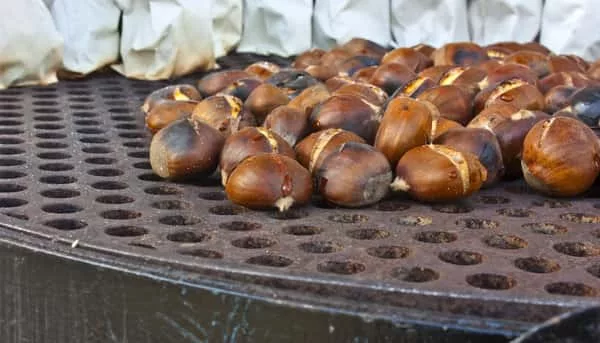Hopeless holiday romantics who dream this time of year about chestnuts roasting on an open fire are living in the right place to enjoy the reality of that practice here in Michigan's Great Southwest. According to the crew at Michigan State University Extension, edible sweet chestnut orchards have sprung up across Michigan over the last 20 years and by 2007 Michigan had the largest number of chestnut growers and the most acreage of any state in the union.
Better yet, Michigan's chestnut producers have harvested a bumper crop this season. MSU Extension officials say that with commercial cultivars coming into bearing and cooperation from the weather cycle, chestnut harvest in Michigan is estimated to have doubled this year.
A number of chestnut species are found naturally in the landscape, in green spaces as ornamentals and are also planted in orchards for nut production. The true Castanea species are the edible chestnuts and include the American chestnut, Chinese chestnut, Japanese chestnut and the European chestnut. The kernels of these species are enclosed in sharp, spine-covered burs that can be delicious when handled properly.
MSU Extension Fruit Educator Mark Longstroth tells me that he is not aware of any major chestnut growers in Berrien or Van Buren Counties, but says there are several acres growing "here and there" in the region.
Chestnut is one of the world's most popular nut-bearing trees and offers a number of unique qualities. Fresh chestnuts are much lower in fat than other nuts with a carbohydrate content comparable to wheat and rice, and also contain Vitamin C. Chestnut acreage in the U.S. has increased substantially over the past 30 years with the largest acreages here in Michigan. Despite that substantial growth, U.S. production still accounts for a very small portion of the market at less than 1-percent of total world production according to the USDA.
According to the MSU Extension team, acreage along the Lake Michigan shoreline provides the ideal conditions for chestnut production. They also remind us that chestnuts are not just for roasting. Chefs around the world recognize their unique characteristics and produce all sorts of delicious soups, pastas and spreads using the chestnut. You can search online or in cookbooks to see how you can use this local food in your own recipes.
MSU Extension agents will provide an introductory chestnut session and informal luncheon at the Great Lakes Fruit, Vegetable and Farm Market Expo next month from December 6th through the 8th in Grand Rapids.






